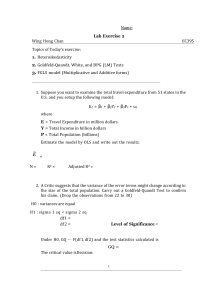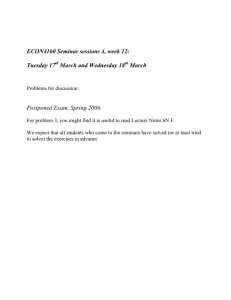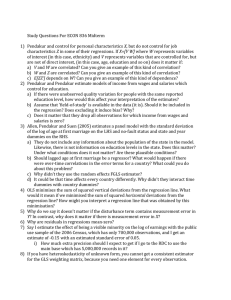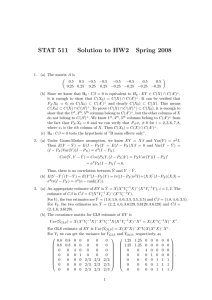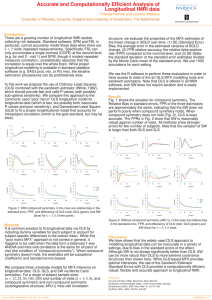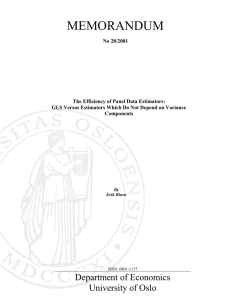β , 1,..., ε
advertisement
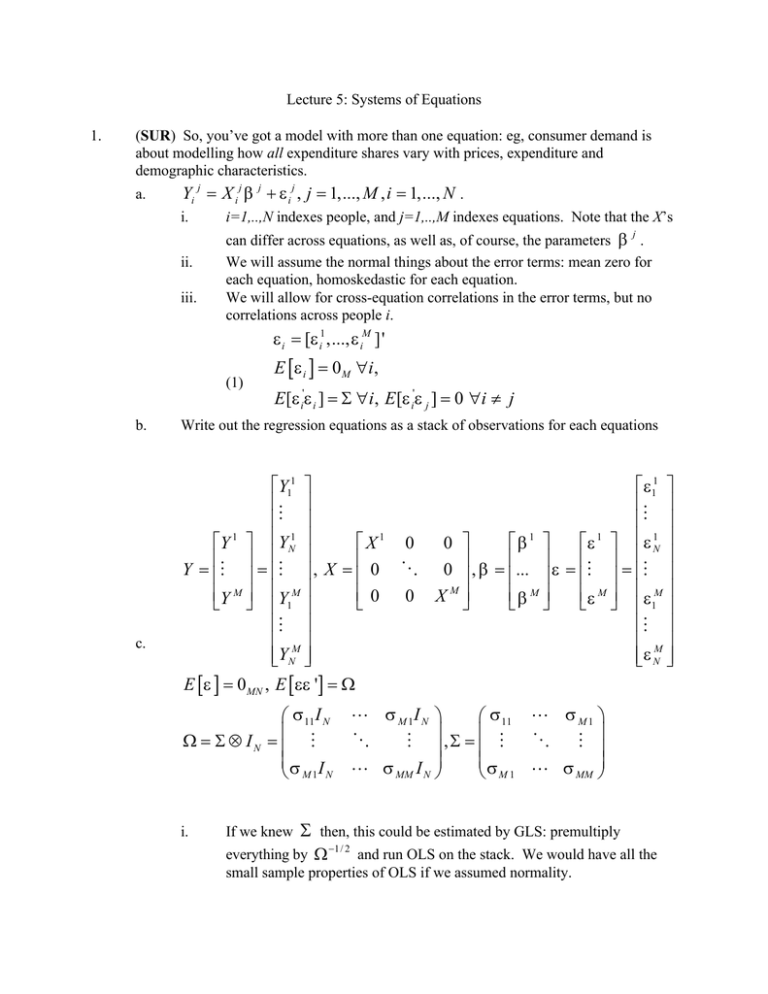
Lecture 5: Systems of Equations
1.
(SUR) So, you’ve got a model with more than one equation: eg, consumer demand is
about modelling how all expenditure shares vary with prices, expenditure and
demographic characteristics.
a.
Yi j = X i j β j + ε i j , j = 1,..., M , i = 1,..., N .
i.
i=1,..,N indexes people, and j=1,..,M indexes equations. Note that the X’s
can differ across equations, as well as, of course, the parameters β .
We will assume the normal things about the error terms: mean zero for
each equation, homoskedastic for each equation.
We will allow for cross-equation correlations in the error terms, but no
correlations across people i.
j
ii.
iii.
ε i = [ε i1 ,..., ε iM ]'
(1)
b.
c.
E [ ε i ] = 0 M ∀i ,
E [ε i'ε i ] = Σ ∀i , E [ε i'ε j ] = 0 ∀i ≠ j
Write out the regression equations as a stack of observations for each equations
Y11
ε11
M
M
Y 1 YN1
X1 0
β 1
ε 1 ε 1N
0
Y = M = M , X = 0 O 0 , β = ... ε = M = M
Y M Y1M
0 0 XM
β M
ε M ε1M
M
M
M
M
YN
ε N
E [ε ] = 0 MN , E [εε '] = Ω
σ 11 I N
Ω = Σ ⊗ I N = M
σ I
M1 N
i.
If we knew
Σ
L σ M 1I N
σ 11 L σ M 1
O
M , Σ = M
O
M
σ
L σ MM I N
M 1 L σ MM
then, this could be estimated by GLS: premultiply
everything by Ω −1/ 2 and run OLS on the stack. We would have all the
small sample properties of OLS if we assumed normality.
d.
Σ , then we could find a consistent estimate of it,
In contrast, if we didn’t know
µ , and then premultiply everything by Ω
µ
construct Ω
, and run OLS on the
stack. This is called feasible GLS (FGLS), and we can use only asymptotics
(though we don’t need to assume normality).
What is a consistent estimator for Ω ? How about do OLS on the stack, collect
−1/ 2
e.
the big vector of sample errors e = e '... e ' ' (which is a vector of length
MN—N errors in each of M equations), and then calculate
1
M
Ω = {ω jk }, ω jk = E [ε jε k ],
{ }
µ= ω
µ jk , ω
µ jk = 1
Ω
N
N
∑e e
i =1
i
j k
i
f.
This FGLS strategy is called “seemingly unrelated regression” (SUR) because the
only connection across equations is in the disturbance terms—they are otherwise
seemingly unrelated.
g.
Cool thing: If X
j
= X K ∀j , k , then FGLS is identical to eq-by-eq OLS.


